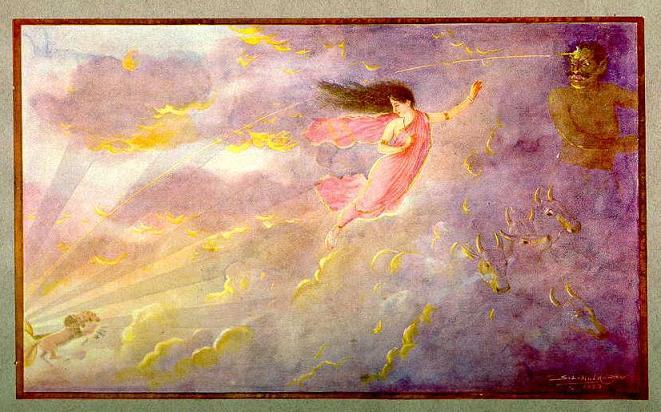Sri gurubhyo namaha.

The intensely spiritual period of navaratri has just passed, and the joyous occasion of Deepavali has also passed. Now, it is another of those special periods - that of Kanda sashti. Is there ever an end to the many vratas and periods of spiritual austerities, I hear you wonder!
Though the vratas are for different deities (navaratri for the Devi, Deepavali for Krishna or Rama and Kanda sashti for Muruga), there is a theme that is common to all three. What might that be? If we look into the legends associated with these vratas, we can observe that all the three periods speak of the defeat that the forces of evil suffer at the hands of the forces of good. During the nine nights of navaratri, the supreme Devi battled with Bhandasura and his demonic forces and triumphed in the end of the battle. Bhandasura was destroyed along with his city (shunyaka) and his entire clan and army and the world was once again a pleasant and peaceful place. Then (at a different epoch) the asura Narakasura tormented the denizens of the earth and the heavens. Due to the boon that he had obtained from Brahma, Krishna along with Sathyabhama had to battle with Narakasura and defeat him. That day of his defeat and subsequent death at the hands of Krishna is celebrated as Deepavali.

Then again (at a different epoch) the asura called Tarakasura engaged in activities that were sheer torture to the devas and the people of the earth. This time (once again due to the boon obtained by Surapadman) it was Muruga, born of the seed of Siva, who had to command the army of the devas and battle with Surapadman. After a deadly battle which lasted 6 days (where the army of the Lord Muruga camped in different locations each night) Muruga or Skanda the Devasenatipathi (Commander in chief of the army of the devas) won the battle. On the sixth day or Sashti, Muruga killed the asura - Sura samharam- in Tiruchendur. It is also worthy of note that Muruga carried with him his weapon (Vel) a spear that was blessed and empowered for the specific purpose of defeating Tarakasura, by Devi Parvati. Hence his ayudha has been called Shakti Vel. It is also interesting to note that in the final stages of the war, Muruga flung his Velayudham at the asura and it split him into two halves. These two halves transformed themselves (due to his powers of maya) into a peacock and a cock. Muruga then made the peacock his vehicle (mayil vahanam) and the cock became the emblem of his flag (cevarkodi).
The devotees of Muruga usually spend the period of the six days by observing various vows and fasting from food (much like navaratri) and reading the various legends and puranas associated with Muruga. They also recite the Kanda sashti kavacham twice or thrice daily to empower themselves and to obtain the everlasting grace of the warrior prince, Muruga.
May the grace of Subrahmanya, who preached the meaning of the Pranava to Brahma himself lift all into higher states. May He shower His infinite wisdom (much like He did to Siva His father) on all and help us defeat the negative forces that are both within and without us.
Om soum saravanabhava shreem hreem klim kloum soum namaha.

